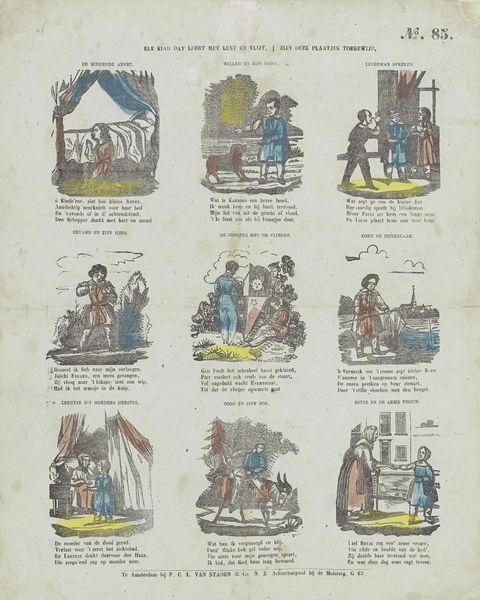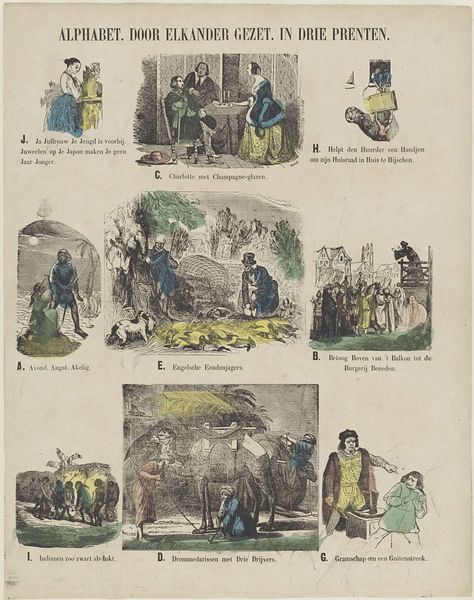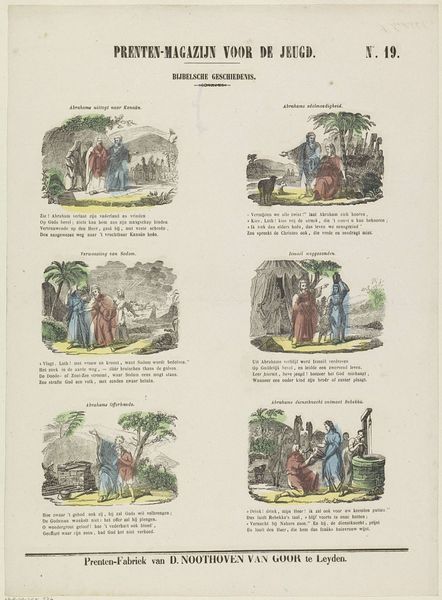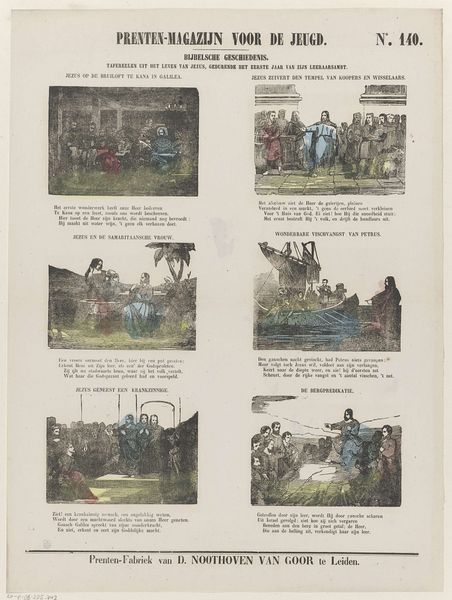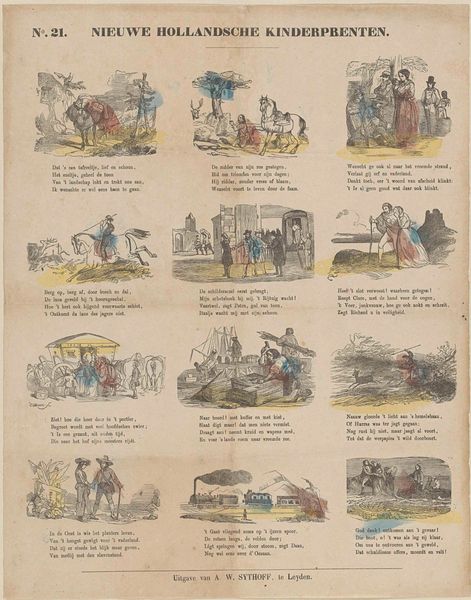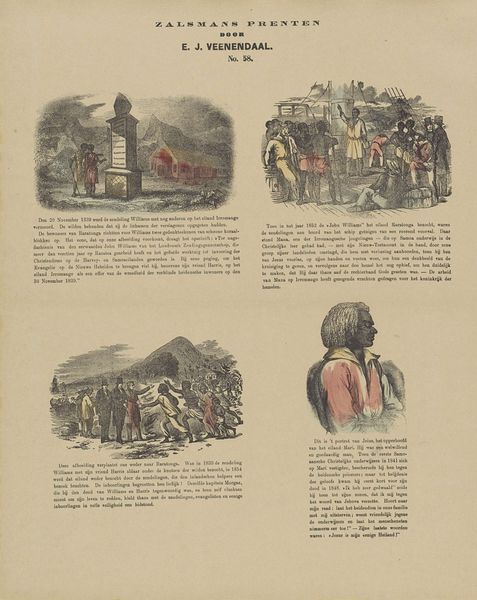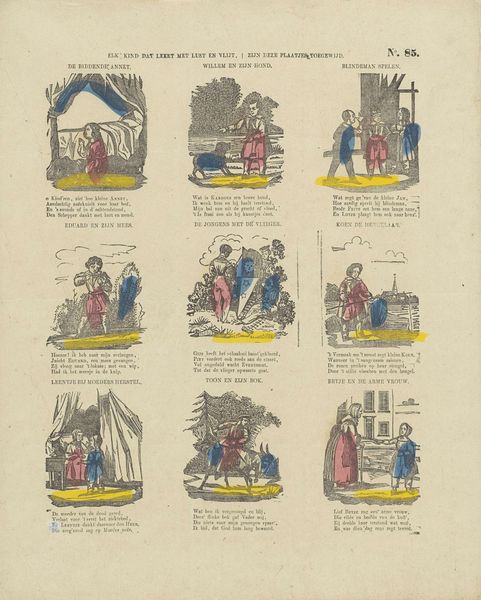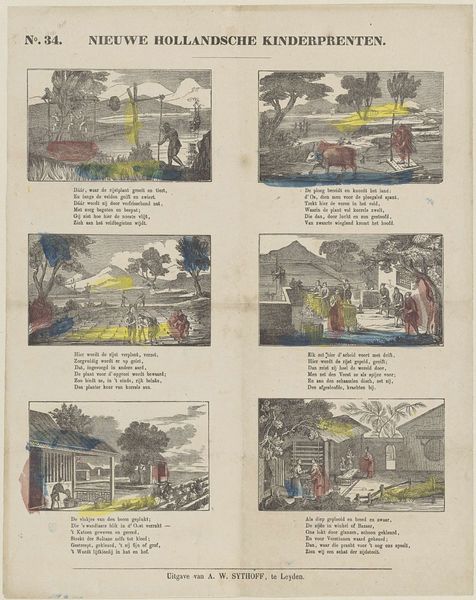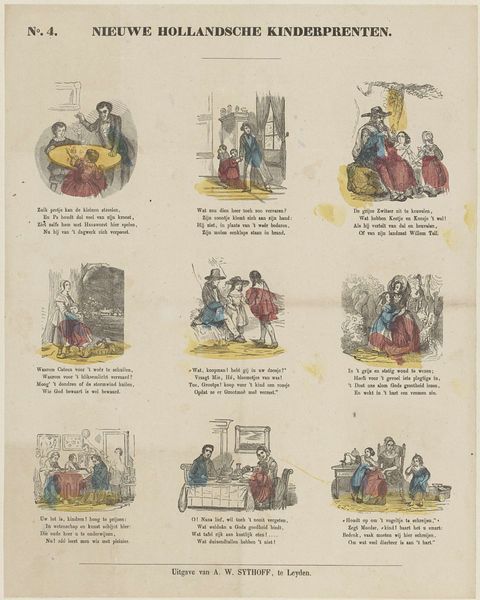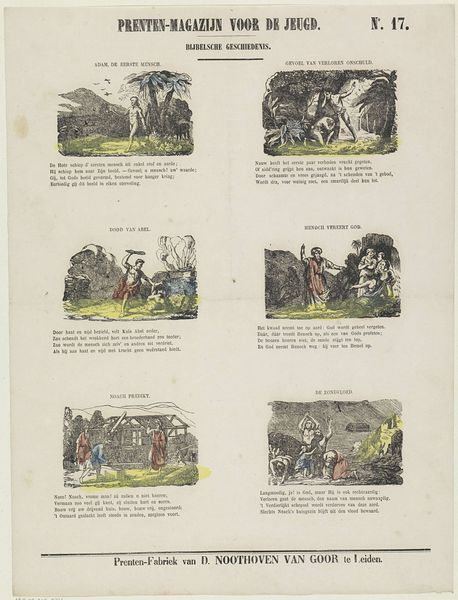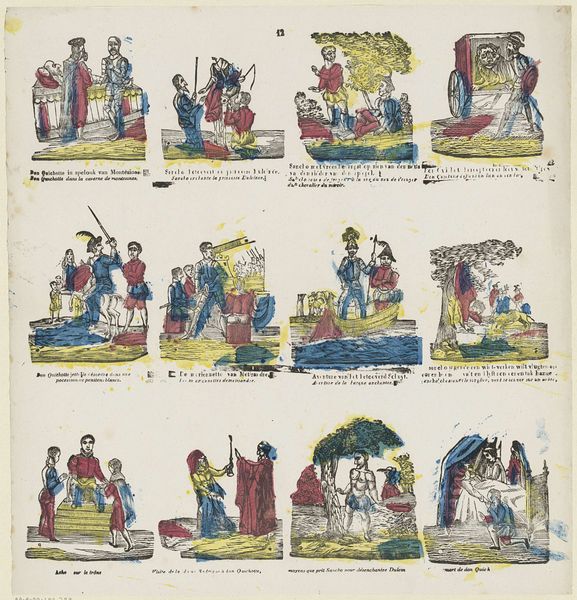![Hier ziet gij Robinson gereed [(...)] by Albertus Willem Sijthoff](/_next/image?url=https%3A%2F%2Fd2w8kbdekdi1gv.cloudfront.net%2FeyJidWNrZXQiOiAiYXJ0ZXJhLWltYWdlcy1idWNrZXQiLCAia2V5IjogImFydHdvcmtzL2VlZDRhMDFlLTJkOTYtNDhlMC1iZjVjLTNmNzNmOGU3Zjc4MS9lZWQ0YTAxZS0yZDk2LTQ4ZTAtYmY1Yy0zZjczZjhlN2Y3ODFfZnVsbC5qcGciLCAiZWRpdHMiOiB7InJlc2l6ZSI6IHsid2lkdGgiOiAxOTIwLCAiaGVpZ2h0IjogMTkyMCwgImZpdCI6ICJpbnNpZGUifX19&w=3840&q=75)
drawing, print
#
drawing
#
aged paper
#
quirky sketch
#
narrative-art
# print
#
sketch book
#
personal sketchbook
#
idea generation sketch
#
sketchwork
#
sketchbook drawing
#
watercolour illustration
#
genre-painting
#
storyboard and sketchbook work
#
sketchbook art
Dimensions: height 392 mm, width 310 mm
Copyright: Rijks Museum: Open Domain
Editor: This is "Hier ziet gij Robinson gereed," dating from between 1861 and 1929, by Albertus Willem Sijthoff. It's a print, seemingly from a children's book, depicting scenes from Robinson Crusoe. It feels both quaint and slightly unsettling. What symbolic weight do you think these images carried for children of that era? Curator: That's an excellent question. Think about Robinson Crusoe as a cultural touchstone. For a 19th-century Dutch child, these images aren’t just adventure; they’re about civilization versus the wild. Crusoe is an emblem of resourcefulness, yes, but also of imposing European values onto a "savage" landscape and its inhabitants. Consider the figure of Friday – what does his depiction convey about the prevailing attitudes towards race and colonialism? Editor: So you’re saying that seemingly innocent imagery could subtly reinforce a sense of cultural superiority? The visual shorthand and simplification, perhaps, doing more than we give credit for? Curator: Precisely. The visual language shapes perceptions. Notice the contrasting depiction of Crusoe and Friday throughout these panels. Crusoe is consistently portrayed with a degree of agency and control, while Friday’s depiction, his posture, his clothing—or lack thereof—serves to highlight his “otherness,” doesn't it? Editor: I do see it. That's a chilling thought. Looking at it again, there's almost a palatable tension simmering between what feels like harmless storytelling and an embedded ideology. Curator: That tension is precisely where the image holds its power. It speaks volumes about the societal assumptions and power structures that existed, normalizing a particular worldview for young, impressionable minds. What do you take away from recognizing it in that context? Editor: That understanding context is as essential as understanding technique, and the combination helps unlock some really unsettling perspectives, making you rethink children's books... and just about everything. Curator: Indeed. It serves as a potent reminder that images, particularly those we consume early in life, leave indelible marks.
Comments
No comments
Be the first to comment and join the conversation on the ultimate creative platform.
